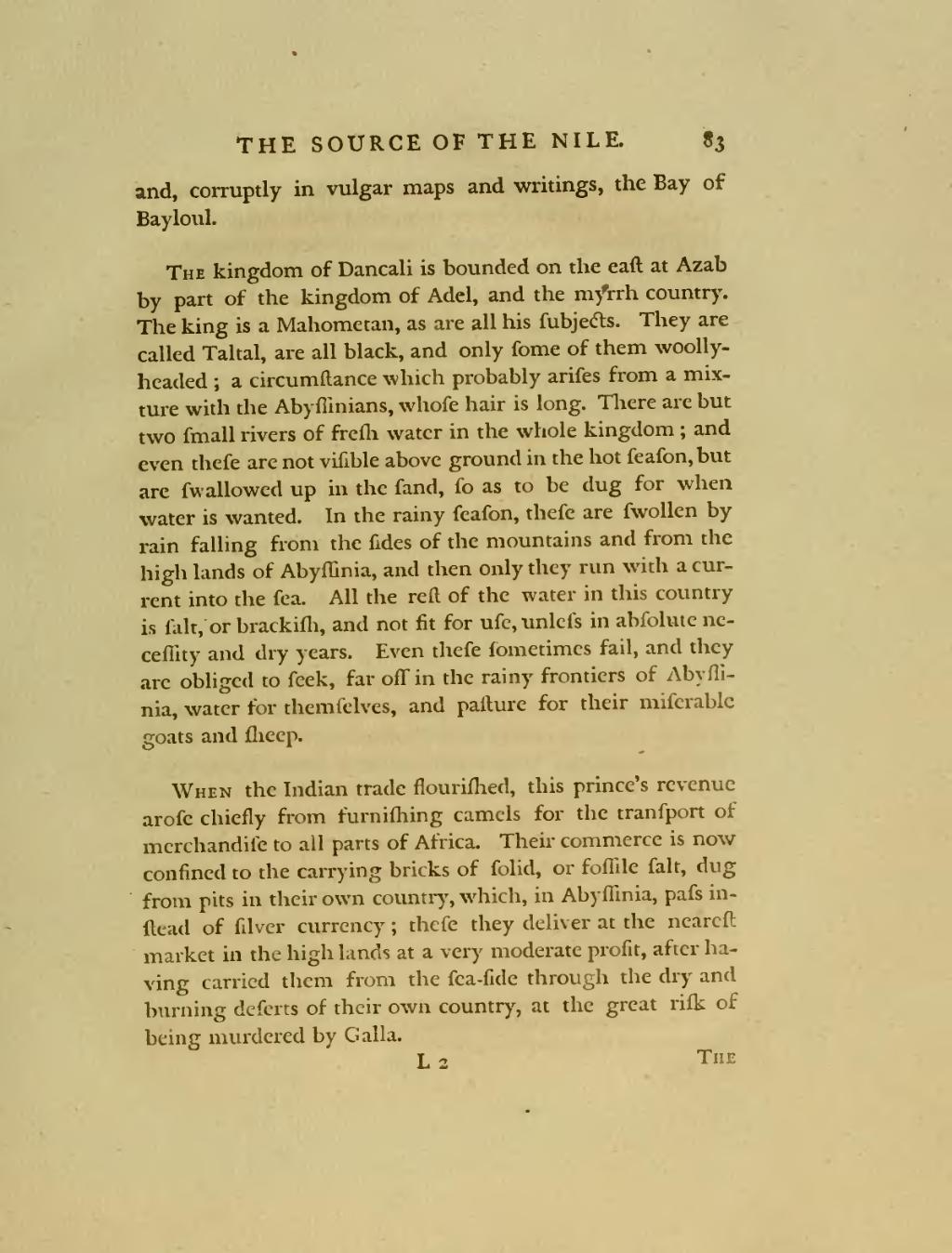and, corruptly in vulgar maps and writings, the Bay of Bayloul.
The kingdom of Dancali is bounded on the east at Azab by part of the kingdom of Adel, and the myrrh country. The king is a Mahometan, as are all his subjects. They are called Taltal, are all black, and only some of them woolly-headed; a circumstance which probably arises from a mixture with the Abyssinians, whose hair is long. There are but two small rivers of fresh water in the whole kingdom; and even these are not visible above ground in the hot season, but are swallowed up in the sand, so as to be dug for when water is wanted. In the rainy season, these are swollen by rain falling from the sides of the mountains and from the high lands of Abyssinia, and then only they run with a current into the sea. All the rest of the water in this country is salt, or brackish, and not fit for use, unless in absolute necessity and dry years. Even these sometimes fail, and they are obliged to seek, far off in the rainy frontiers of Abyssinia, water for themselves, and pasture for their miserable goats and sheep.
When the Indian trade flourished, this prince's revenue arose chiefly from furnishing camels for the transport of merchandise to all parts of Africa. Their commerce is now confined to the carrying bricks of solid, or fossile salt, dug from pits in their own country, which, in Abyssinia, pass instead of silver currency; these they deliver at the nearest market in the high lands at a very moderate profit, after having carried them from the sea-side through the dry and burning deserts of their own country, at the great risk of being murdered by Galla.
